Should you go swimming in the Kimberley, it’s anyone’s guess what might kill you first. As I sail through the region on Le Ponant, a 32-passenger luxury yacht, I’d put my money on the sharks. At anchor in the evenings, when the ship’s lights illuminate the surrounding sea, there are hundreds of them in every shape and size, attracted to the fish, attracted to the lights. Other guests are putting their rhetorical bets on the crocs — estuarine crocodiles, that is. You might know them as saltwater crocodiles, but that’s a misnomer: in these parts you can find them a long way from sea. They can even climb sheer rock faces to get to freshwater pools you’d probably consider safe to swim in. They’re the largest reptiles on earth, with some growing up to six metres long. A box jellyfish could knock us off, too. They have millions of tiny stinging cells attached to up to 60 ribbon-like tentacles, containing enough venom to initiate cardiac arrest. Of course, there’s also the blue-ringed octopus. It carries enough venom to kill 26 adults within minutes; their bites are tiny and painless, and their victims often don’t know they’ve been bitten until paralysis kicks in. There’s no known antivenom. Whatever it is, something’s bound to get us, and none of us on board is willing to find out what. And so we spend our days staring out at a glazed blue sea.
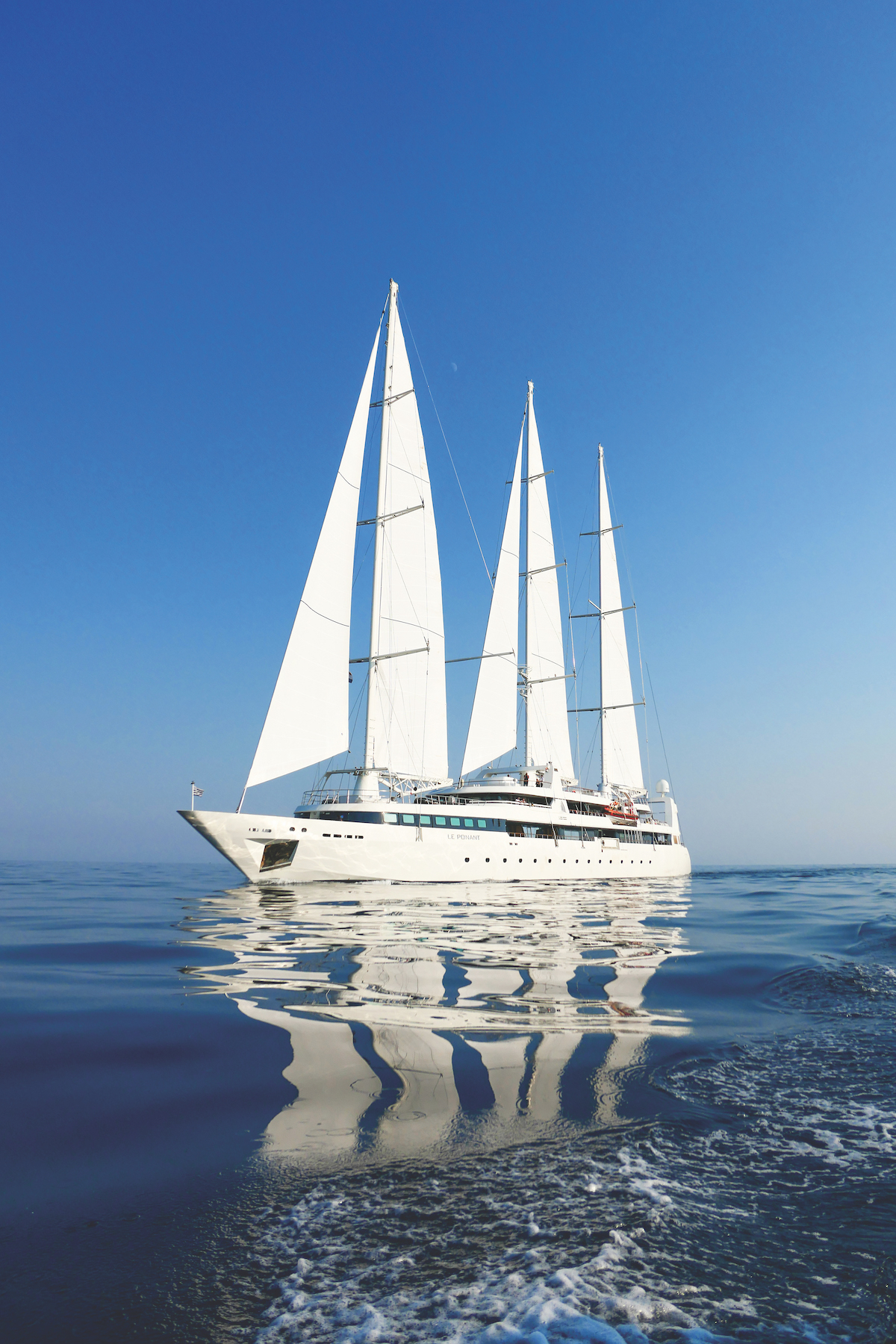

What does it say about modern luxury travellers that we flock in boats to places where we can’t actually get in the water? That we now pay premium prices to visit areas we can’t really access at all? And that it’s this lack of accessibility that motivates us — that creates the exclusivity of a destination, therefore making it desirable? While budget-minded big-ship cruisers head off to the South Pacific to frolic off white-sand beaches, five-star small-ship expedition cruisers opt for the croc-ridden waters of Australia’s Kimberley region or the zero-degree seas of Antarctica. Since Covid shutdowns ended, these two destinations have become some of the hottest tickets in expedition cruising. The Kimberley recorded a near sell-out of all cabins this year, with bookings for 2024 opening in 2022 to meet demand, while Antarctica’s visitor numbers have increased by at least 40 per cent on any pre-Covid season. More than 100,000 passengers will travel to the Antarctic this season.
But it’s the Kimberley region that’s the grand prize for luxury small-ship Australian cruise travellers. While Antarctica now hosts more than 50 cruise ships every season — some of which carry more than 1,000 passengers — the Kimberley is the domain of smaller ships with much smaller passenger loads, typically ranging between 12 and 200 people, and with far more favourable staff-to-guest ratios. The Kimberley remains largely devoid of big ships because it is one of the world’s most inaccessible destinations. Covering an area three times the size of England, it’s home to fewer than 40,000 people. It’s bigger than 75 per cent of the world’s countries, but because there are few roads, the only way to see its entire coastline is by plane or boat. But the coast — which is home to more than 30 per cent of Australia’s 8,222 islands — is protected by the Southern Hemisphere’s most ferocious tides, with a range of up to 12 metres, meaning the difference between high and low tides can be equivalent to the height of a three-storey building. There are few resorts in the vast wilderness areas, and any medical emergency requires a helicopter ride or lengthy drive to one of the region’s health centres.

Cruises typically depart from the Kimberley towns of Broome or Wyndham, or from Darwin in the Northern Territory, between May and October. I start my journey in Wyndham just prior to sunset, boarding from a pier close to the waterline, surrounded by three four-metre-long estuarine crocodiles. Le Ponant is taking us on a seven-night trip, tracing the Kimberley coast from east to west, finishing some 350 kilometres north of Broome in Kuri Bay. This three-masted yacht has more than 1,000 square metres of sails that can achieve a speed of 12 knots (or 22 kilometres per hour), and it is powered solely by wind whenever conditions allow. In an age of hemispheric heat waves and rapidly melting ice caps, it’s comforting to be on a cruise ship that is committed to sustainable tourism.
Royal Caribbean International’s Icon of the Seas — the largest cruise boat ever built, at 365 metres, and able to carry 5,610 passengers and 2,350 crew members — will start sailing in January 2024. It will house the world’s largest waterpark at sea. It surpasses the current record holder, Royal Caribbean’s Wonder of the Sea, which can house 5,734 passengers and 2,300 crew members. As cruise ships get bigger and bigger, and cruising gets more and more popular (it’s estimated 31.5 million people will cruise in 2023, while the multibillion-dollar industry is projected to keep growing strongly), these small-ship Kimberley expedition cruises will become even more of an oddity.
The advantages of a smaller ship in the Kimberley soon become obvious when we sail into the mouth of the King George River. Located roughly 12 kilometres from the river’s mouth, the stunning King George Falls can only be seen by air or water. Expedition ships can steam right up the river and dip their bows below the cascade, which forms one of the highest waterfalls in Western Australia. We anchor where the river meets the sea and ride Zodiac boats up the waterway, passing by Australian humpback dolphins and five-metre-long estuarine crocs.
At 1.8 billion years old, the landscape here is among the oldest on earth. Intricate sandstone gorges rise at 90 degrees from the water, forming columns that resemble thousands of crumbling castles. The rocky forms balance precariously: gigantic Lego blocks that defy gravity. A dugong bobs through sea grass along the riverbank — one of many distinctive creatures that populate these waters. Our guides turn off the engines and silence resounds among the rock faces. The further we go, the taller the sandstone cliffs become, until, at last, we’re dwarfed on all sides as we face an 80-metre-high waterfall. We take the customary dip under the falls, the only time we’ll touch the water on this expedition.
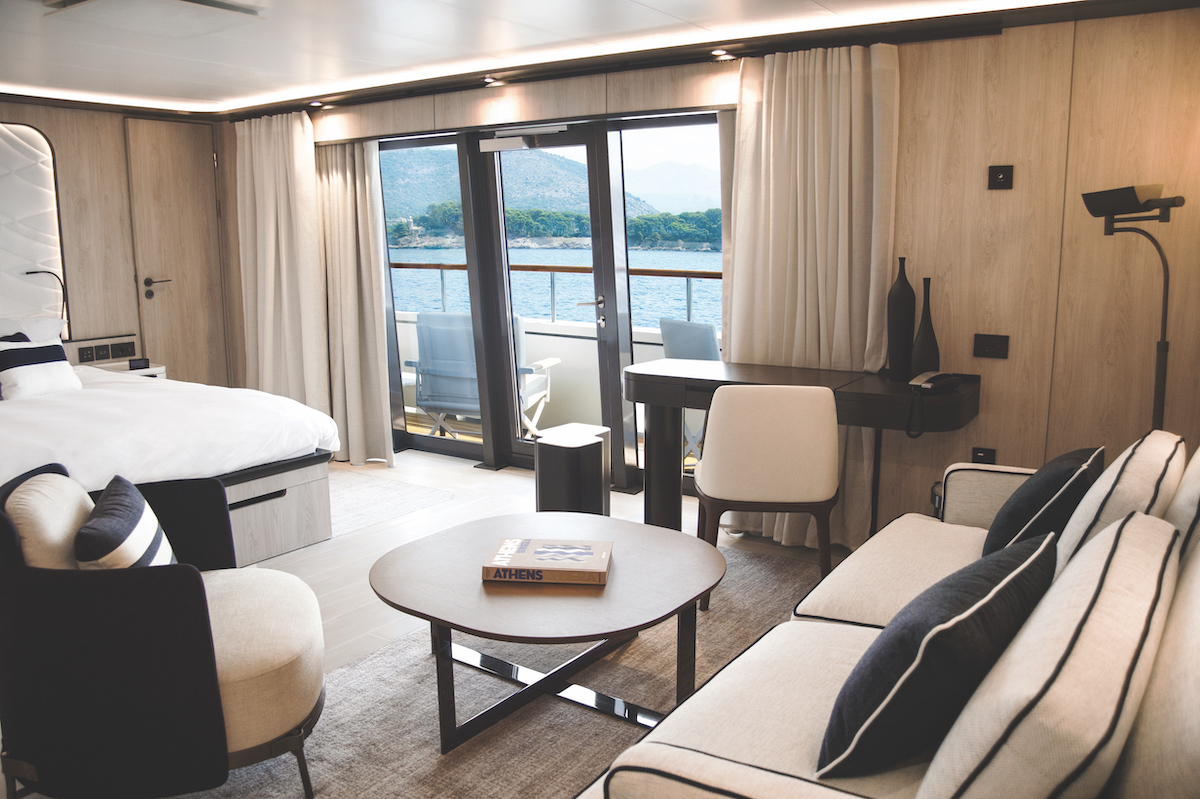
The next day we visit some of the world’s oldest artworks, located in a bay of forest-topped islands that we access directly from the ship. The Kimberley has been home to Aboriginal culture for some 60,000 years. Thousands of rock art sites have been discovered across the region, mostly in rock shelters or on flat expanses. Painted with ochres that bond well with sandstone, some artworks have lasted here for tens of thousands of years. The oldest work found dates back roughly 40,000 years. Almost every Kimberley cruise itinerary includes visits to ancient rock art galleries. I climb higher and higher into a network of caves, occasionally shuffling on my back to see art painted beneath thick columns of sandstone that rest close to the ground. “There’s so much art around here,” head guide Patrick Horgan says. “There are tens of thousands of sites that no one’s ever seen, except the Indigenous people who painted them.”
The landscape changes daily, as wild and desolate as anywhere. Sometimes, with its flat buttes and orange-brown plateaus, the coast resembles Utah’s national parks. “How old and beaten-down the land is within its crone-skin patterns, its wens and scars and open wounds,” author Tim Winton writes in his ode to the region, “Dirt Music”. Other days we anchor beside white-sand bays in clear water that resembles the seas of Polynesia. But any time we fancy a dip, something big and scaly and deadly shifts itself in the milky blue ocean.
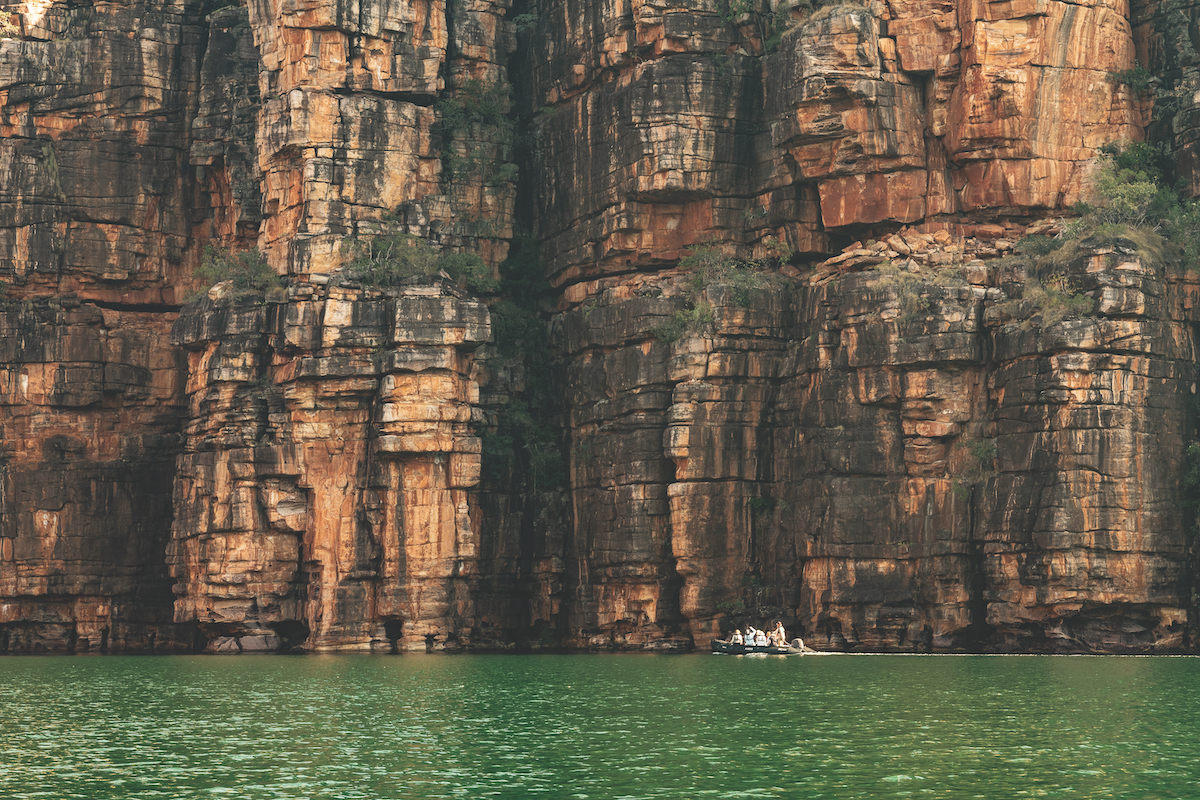
Le Ponant’s Jean-David Lemaire surely comes from central casting. He’s precisely the way a French captain would look in the movies: his hair is thick and black and wavy and grows to his collar; his face is deeply tanned but oddly unlined; his wrists are sheathed in silver bangles; and his left leg is inked with a French Polynesian tribal tattoo. He has a dozen crew working the sails, responding to his orders. “When the sails are open, I can make this ship sing,” he tells me. “The sound of it sailing at 12 knots, it gives me goosebumps. The ship is in control, she is the master of the sea — not me.”
Lemaire’s father was among a group of French sailors who started the boat’s parent company, Ponant, with this vessel in 1988. Committed to a more responsible type of cruising, Ponant now runs 13 small-capacity luxury ships around the globe. The brand has released a strategy paving the way towards a zero-carbon footprint in cruising, aiming to be a catalyst for new energy solutions in the market. Its latest project — announced in July — is a 181-metre-long, 100-stateroom transoceanic ship set to sail in 2030, combining renewable energy, supplied by wind and sun, with other technologies to allow for carbon neutrality.
While the vessel I’m on is in the Kimberley for one season only before moving back to the Caribbean and Mediterranean, Ponant now operates two other small-capacity, sustainable vessels in the Asia-Pacific region, marking a doubling of the brand’s presence here since the pandemic (expeditions can be booked at au.ponant.com). The cruise industry remains the fastest growing market within tourism and is expected to build 12 per cent above pre-pandemic levels by 2026. The Cruise Lines International Association, which represents the industry, has promised to make zero-emission vessels and fuels widespread by 2030, with net-zero carbon cruising the goal for 2050. It has a lot to make up for. A recent study by the Marine Pollution Bulletin shows a large cruise ship can have a carbon footprint greater than 12,000 cars. The bulletin also reported that each Antarctic cruise passenger can generate as many CO2 emissions on a week-long voyage as the average European does in an entire year.
“This ship was more about emotions than money,” Lemaire says. “There are bigger ships making much more money. But the fun is in not starting the engine and just using what we can muster from the air around us. Le Ponant is not a passenger ship with sails, it is a sailing ship.”
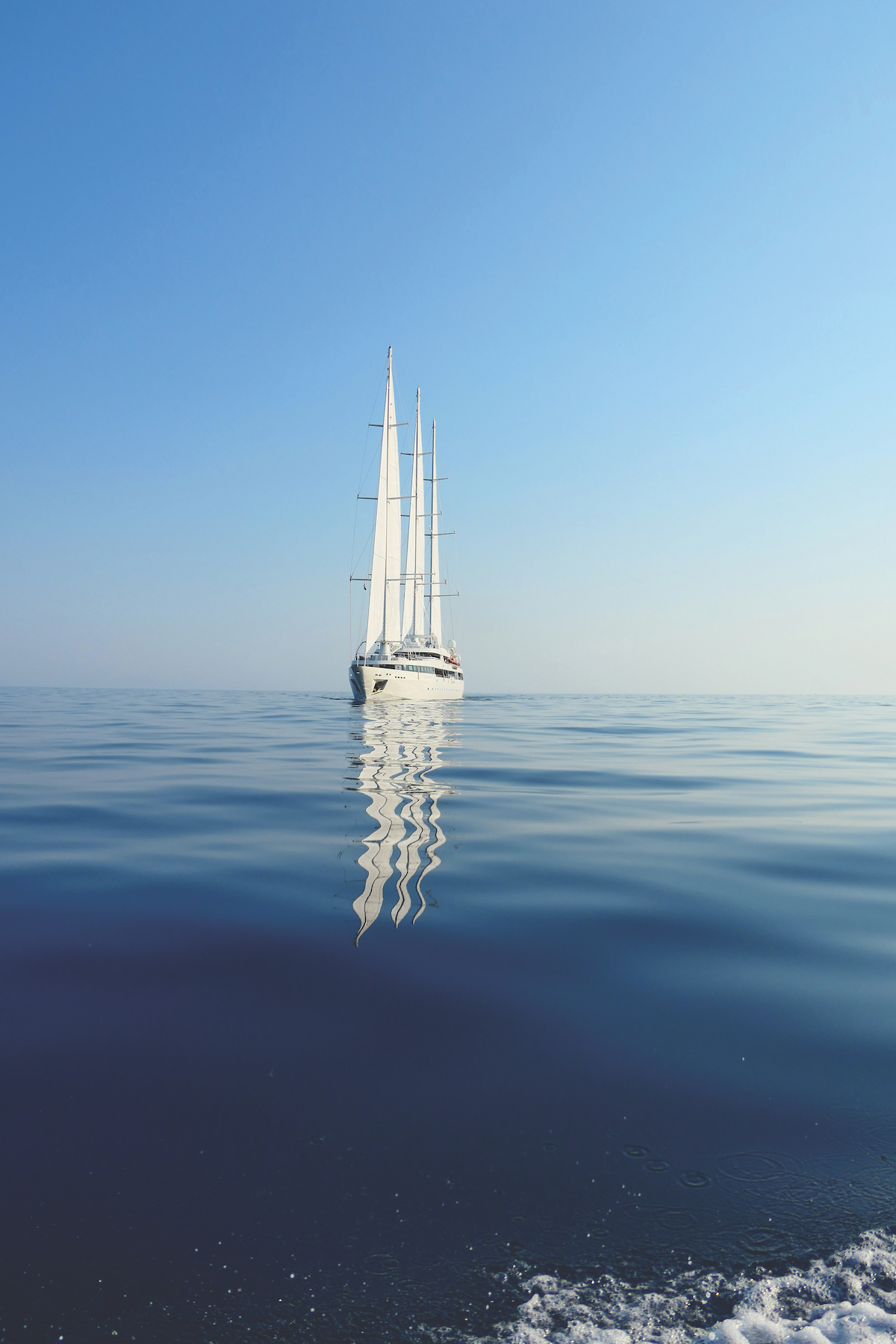
Along this remote north-west coast of the Kimberley, the cattle industry never encroached; most areas look completely undisturbed by anything remotely modern. Humpback whales breach on both sides of the ship, some just a few metres away. Between June and October each year, the Kimberley is home to the world’s largest population of this species. Having swum north from the Antarctic, approximately 35,000 humpbacks gather here to calve.
But there’s danger lurking around every corner. Surging tides slow our progress, and at times it looks like we’re going backwards. One morning, while on deck at dawn, I watch a three-and-a-half-metre tiger shark circle the boat. Another morning, I see a two-metre bull shark jump clean from the water as we motor past in the Zodiac. Estuarine crocodiles patrol the shorelines, especially in the mangroves, of which there are at least 15 kinds in the Kimberley. There’s a hostility to this landscape that tempers its beauty; at times it looks plain mean. But that is what saves it. It’s what keeps Royal Caribbean International’s Icon of the Seas away. If this were anywhere else, Club Med and McDonald’s might’ve colonised the area already. We’d be lining up for cabana chairs on these white sand beaches while the locals fetched icy cold piña coladas. But instead, where we visit, there’s nothing at all — not a single resort, not a single beach bar — and in seven days I see only one other vessel (which soon moves on). The perceived dangers of this wilderness keep travellers at bay. And while you can’t swim in these waters — or even linger too long by the water’s edge — taking a small-ship ride along this harsh coastline is one of the last true decadences for modern tourists.




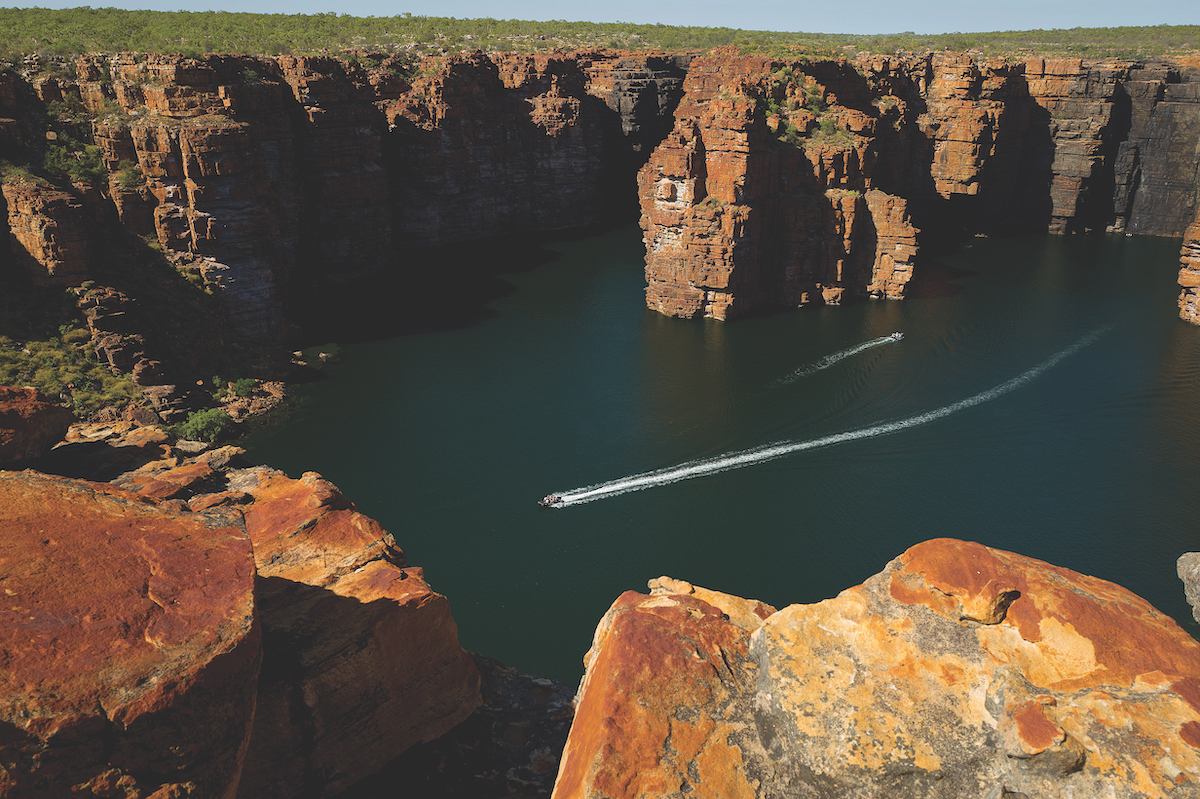 The confrontingly vast, raw and remote Kimberley region is a grand prize of the cruising sector. Photography by Nathalie Michel/Studio Ponant.
The confrontingly vast, raw and remote Kimberley region is a grand prize of the cruising sector. Photography by Nathalie Michel/Studio Ponant.